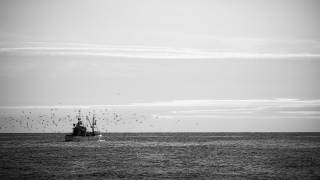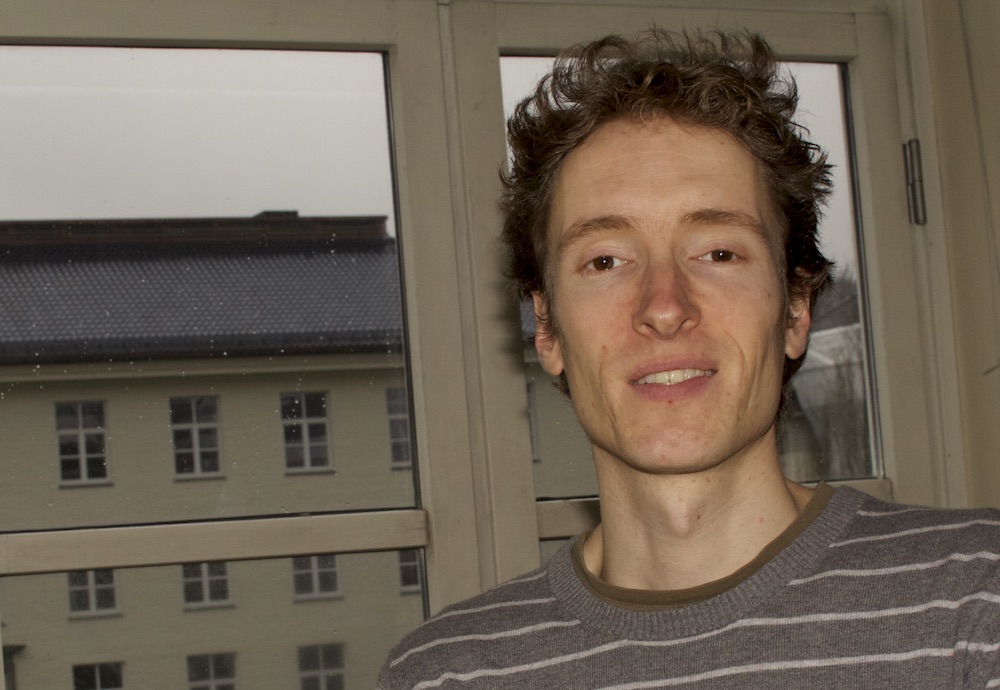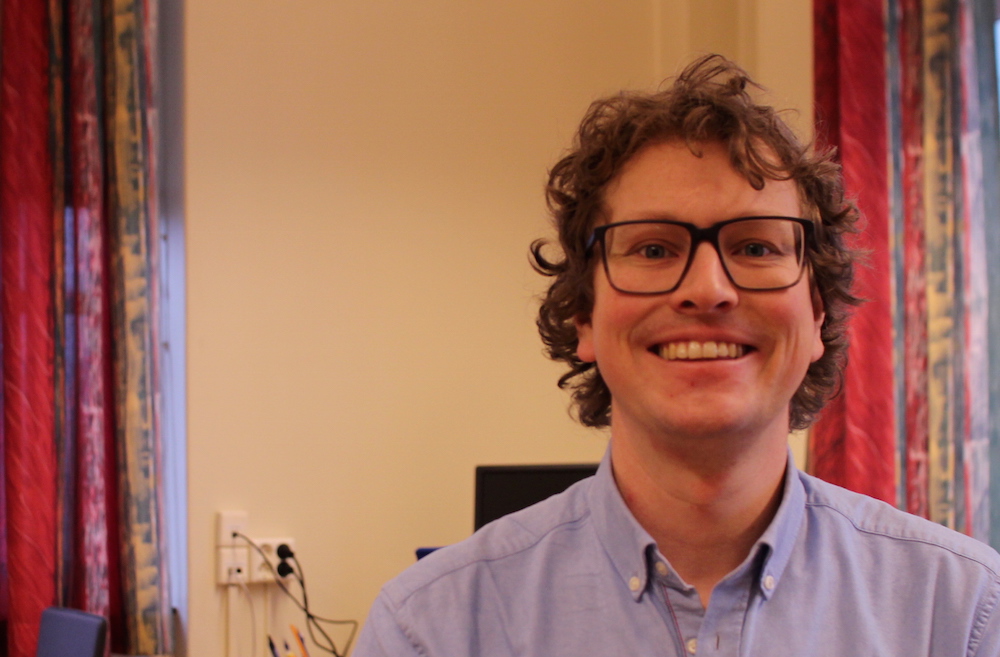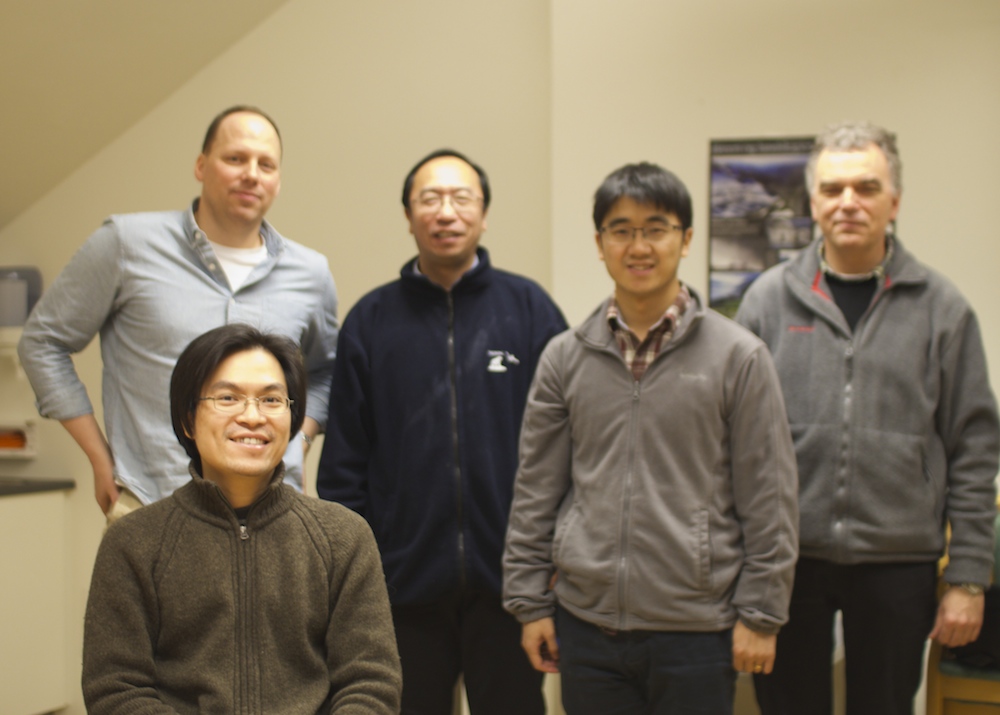Prosjektside - Organic
Organic
Omveltning, havsirkulasjon og betydning for den globale karbonsyklusen i jordsystemmodeller.

Vår fullstendige nettside er kun tilgjengelig på engelsk
Velkommen til Marco van Hulten - mars 2017

Marco van Hulten ble i begynnelsen av mars ansatt i Organic prosjektet, ved GFI og Bjerknessenteret. Han har en ph.d. i oseanografi og kom til Bergen fra en postdoktorstillinge ved LSCE i Frankrike. Her jobbet han spesielt med modellering av sporstoffer og isotoper i en modell for havsirkulasjon, i forbindelse med GEOTRACERS programmet. (www.geotraces.org)
Ved Bjerkneessenteret skal han jobbe med karbonkretsløpet i havet med et spesielt fokus på kobling til sedimenter. Som en del av Organic-prosjektet vil han bruke den norske jordsystemmodellen NorESM.
Velkommen til Marco!
Ingjald presenterer på Forskningsdagene UNG
In September, Ingjald Pilskog presented a talk on the Organic project and the Ocean Conveyor Belt for a group of youngsters at the event especially targeted youngsters during the Science Days in September 2016.
Besøk av professor Samar Khatiwala
In May, Samar Prakash Khatiwala visited the Bjerknes Centre for Climate Research with the main objective to enhance the collaboration works initiated under the NFR-ORGANIC project. Professor Khatiwala spent several hours each day during his visit implementing the Transport Matrix Method (TMM) to the offline HAMOCC model with Ingjald Pilskog. This is a critical preliminary step to building the acceleration method proposed in the project. By the end of his visit, we managed to extract the HAMOCC code from NorESM and coupled it with TMM. In the next step, Khatiwala and Pilskog will perform several basic experiments with the TMM-HAMOCC, while Pilskog will continue with implementing the Newton-Krylov method in Bergen.
In connection to this visitation a half-a-day mini-workshop was organized, titled ‘Anthropogenic carbon uptake and storage in the North Atlantic’. The workshop had six short talks presented by Bjerknes scientists from RG3, the Biogeochemistry research group at the Bjerknes Centre. Khatiwala also presented an extra talk for the weekly GFI-colloquium entitled ”Constraining ocean ventilation pathways and time scales with observations and models”.
Read more about the visit here.
......................
Sporer dyphavsstrømmene
Radioaktive isotoper bruker fire år fra Sellafield til Norskekysten. Forskere som Yongqi Gao følger det radioaktive avfallet for å se hvordan dyphavsstrømmene dannes og beveger seg.
Les hele historien av Esa Du Plessis om Yongqi Gao og hans kollegaers arbeid i WP1

Velkommen til Ingjald
Ingjald Pilskog begynte som forsker i Organic prosjektet 1. januar 2016, ansatt ved Uni Research og tilknyttet Bjerknessenteret. Han skal hovedsaklig jobbe med karbonsyklusen i NorESM. At January 1. 2016 Ingjald Pilskog started up his work at Uni Research and the Bjerknes Centre in the Organic project.
Her er en presentasjon av Ingjald i Bjerknessenterets serie "Møt våre unge forskere"
Organic-teamet januar 2015

The ORGANIC project will enhance our knowledge in climate variability simulatedby the NorESM model and identify uncertainty that comes with its future projections. The focus is to elucidate the linkage between large scale overturning circulation with the biogeochemical cycling in the ocean.
This link is necessary since hydrography tracers such as temperature andsalinity do not give us a comprehensive overview on the overturning circulation.
On the other hand, biogeochemical tracers such as nutrient and CFCs are closely tied to the ocean circulation and can be used as indicators for patterns and ventilation rates of the ocean.
Due to the non linear interactions between climate and ocean carbon cycle, it is vital for an Earth system model to accurately simulate the relevant former and latter processes individually as well as interactively in order for it to produce a sound future climate projections.
The outcome of ORGANIC will be of highly relevant for both global and regional climate studies, particularly in regions where the ocean ventilation will be perturbed by anthropogenic forcing.
Arbeidet er delt i tre arbeidspakker:
WP1: Følsomhet i mønstre og nivå for den termohalinske sirkulasjonen
WP2: Der havets biogeokjemi er i likevekt
WP3: Dynamikk rundt marine sediment
Prosjektet kobler sammen forskere på tvers av naturvitenskaplige disipliner. Geologer på marine sediment jobber sammen med matematikere og klimamodellører som jobber med den norske klimamodellen NorESM ( Norwegian Earth System model). Forskerne undersøker observasjoner av havets bigeokjemi i modellsimuleringer og observasjoner, fra i dag og i fortiden.
Forskerne vil gjennom dette prosjektet utvikle nye metoder for å undersøke vår forståelse av forholdet mellom fysiske og biogeokjemiske prosesser i klimasystemet. En spesifikk metode som blir utprøvd er "Matrix Free Newton Krylov".
